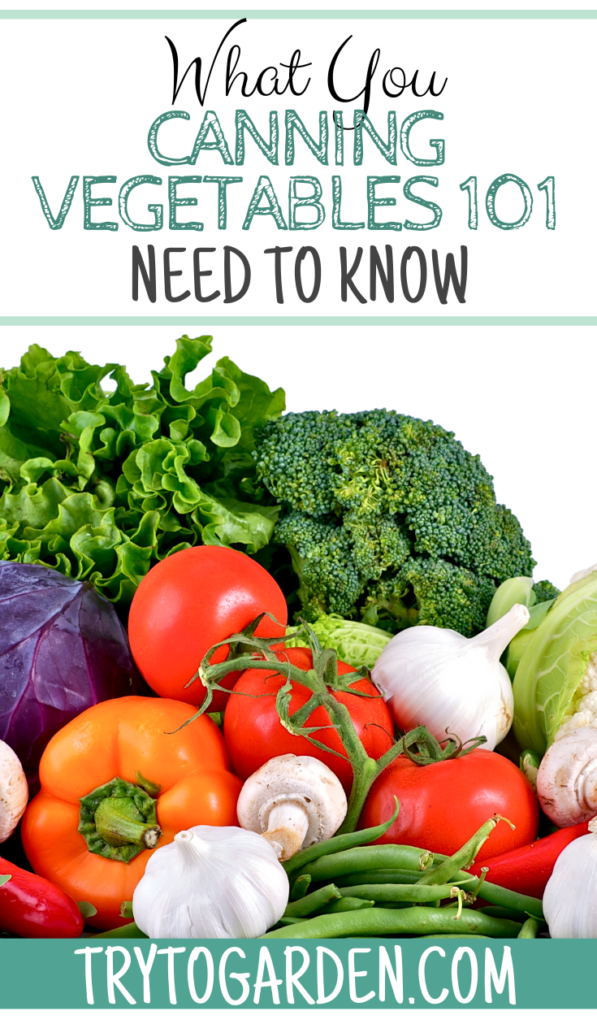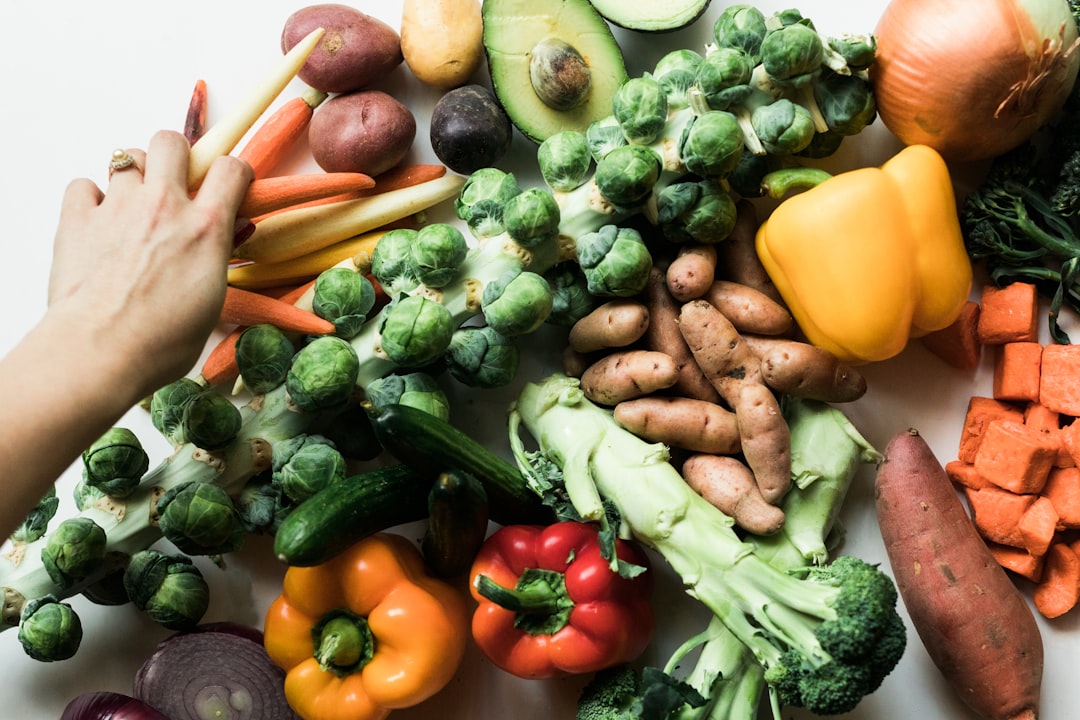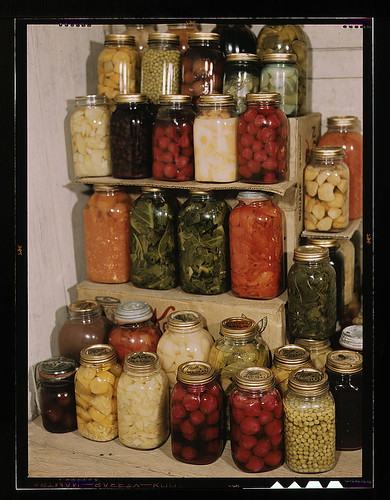This post contains affiliate links, which means I will make a commission at no extra cost to you should you click through and make a purchase. As an Amazon Associate I earn from qualifying purchases.
One thing we all learned from COVID-19 was the simple fact that there can be food instability for the average family. Panic shopping cleared grocery store shelves and it took months for the food supply system to catch up with everything. Canning vegetables on our own looked more and more attractive!

Gardening took off - and so did canning, to the point that supplies were hard to find and the same could be said for seeds. No worries! Things are catching up now with the supply system so you should be good to go for this summer season.
Canning Vegetables 101- What You Need To Know
After you have started growing and harvesting the vegetables in your garden, you will either need to use them right away or save them. A popular way to preserve vegetables is through canning. Here are some beginner tips if you want to try this option.
Is Canning Vegetables Cost Effective?
The first year you do it, no. You have your initial investment of your canner, jars, and a few misc supplies to finish the process.
After you get through that first year? You only have to invest in new canning lids, unless you are using the Tattler brand. Those are reusable - and even if they are twice the price of plain lids? They pay for themselves after you use them twice!
Choose the Method of Canning
Before you start the actual canning process, you need to decide what method to use. There are two main types of canning, including canning in a water bath and using pressure.
With water bath canning, this is going to use lower temperatures and is good for veggies and fruits that have a higher acid content. This might include your pickle and relish, tomatoes, salsa, and any jams or jellies.
The sugar in jams and jellies help preserve the fruit and keep it shelf stable. Salt works the same for vegetables, and the water bath process helps kill the bacteria.
My suggestion? Get the Ball Blue Book of Canning to make sure you are following tried, true, and tested methods for optimal food safety for you and your family.
This water bath canner is a pretty good deal and only $35 : McSunley Medium Stainless Steel Prep N Cook Water Bath Canner, 21.5 quart, Silver
Most other vegetables and fruits can be canned using pressure canning. This is also done with people who can seafood or meats. You need newer jars here as the older ones don't always hold up well. Stick with your name brands, like Kerr or Ball - as the Chinese knock offs have been known to shatter inside pressure canners.
This is the pressure canner I have: Presto 01781 23-Quart Pressure Canner and Cooker.
My favorite source for jars? I love to hit the local Saint Vincent store where jars are $0.20 to $0.35 each. Granted, they don't come with lids, but often do come with bands.
Also look at both garage sales and your local Facebook groups.
Decide on What to Can
If you are growing your own food, you might decide that certain produce is going to be used right away. This is what you can avoid canning. Instead, think about fruits or veggies you tend to use year-round and always want to have on hand.
For many people, this includes tomatoes for tomato sauce and salsa, onions for various cooking dishes, and fruits like strawberries and blueberries. Think about the food you cook the most and what produce is used. This can help determine what you want to can.

Canning Vegetables From Your Garden
We can a lot of veggies like carrots, sugared carrots, green beans, corn, and variations of tomatoes; tomato sauce, tomato paste, tomato ketchup, and homemade tomato soup.
I skip things like peas - to me that was simply too much work to shell all those little buggers and get enough for a few pints. You have to put a value on your time also.
I am also not a fan of things like canned asparagus. I feel it gets too mushy so it is one of the things we eat as soon as it is ready or freeze.
I have only grown potatoes once, and that year was so bad that there was precious little to can. When spuds are as low as $1.50 for a 5 pound bag of Idaho potatoes? I just buy them and can those. They come out MUCH better than the store cans of potatoes and help you rock out both mashed potatoes and potato soup.
Choose a Recipe
When canning your vegetables and fruits, you can also use a recipe. Some people will add seasonings or oils to the vegetable to get a particular flavor. You might want sun-dried tomatoes in the can instead of just regular tomatoes, or you may want to add sugar and pectin to your fruit to turn it into more of a jelly or jam in the jar.
There are many books and online recipes for canning, based not just on what is being canned, but what you are going to use it for... just make sure they are tested recipes.
Those recipes will help you in canning vegetables step by step.
There are a ton of "rebel" canner groups on Facebook that love to share recipes of what their grandma taught them - and many of those methods and recipes have been proven unsafe. The last thing you want to do is make your family ill.

Canning Vegetables on Your Period
(sigh) This is something that online canning groups bring up often as many were told this by their grandmothers over the canning stove. While no official study seems to have been done about this, it seems to be mostly about tomatoes.
The rumors say not to.
Tomatoes can be finicky to can, but I really wouldn't worry about your monthly cycle when canning them. I kind of think grandma was really smart - and coming up with a way to stay out of a hot kitchen for a week of each hot month in the summer. If you research this old wives tail hard enough, you will also see not to can while you are pregnant.
Brilliant.
Always Label Your Jars
One of the more important things to remember with canning vegetables is that you label the jars. This is essential so you know what is in there, what recipe was used, and when it needs to be used by.
Different items have different shelf lives, and it is good to know that that jar of tomatoes that you found in the back of your pantry is 4 or 5 years old - and probably a no-go for dinner.
Canning Vegetables How Long Will They Last
As a general rule, unopened home canned foods have a shelf life of one year and should be used before two years. Commercially canned foods should retain their best quality until the expiration code date on the can.
Items high in acid, like tomatoes and many fruits, will last longer. I personally have many items on a 3-year rotation. I plant them once every three years in my garden and can the heck out of them.
This helps you make use of everything within the time it is still fresh. Canned food lasts a long time, but not forever, so keep that in mind.
